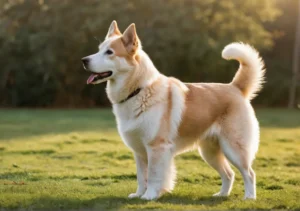Disclosure: We may earn a commission from helpful, relevant links in our content. No cost to you. See our privacy policy.
Ever felt like you’re practically tossing out a steak every time you want your dog to sit or stay?
You aren’t the only one. Those high-value treats can start to feel like a rib-eye served on a silver platter, especially when your pup decides he needs an encore.
Now, wouldn’t it be nice if you could find equally effective, but less extravagant options for doggy rewards? Let’s face it, not every training scenario calls for the doggy equivalent of caviar and champagne.
Welcome to the world of low-value treats, your ticket to sensible, effective dog training that doesn’t break the bank or the calorie limit. Curious? You should be. Let’s jump in.

What Are Low-Value Dog Treats and Why Are They Important?
Low-value treats are essentially the dog training world’s version of a pat on the back or a high five.
They’re not the prime rib of dog treats, but they’re palatable, interesting enough to get your dog’s attention, and crucially, they’re not so exciting that your dog loses his mind.
They are a fantastic tool for routine training exercises where you need your dog to focus on you and not be over-excited by the reward. Think of them as the trusty sidekick to your dog’s training regime – they won’t steal the show, but they’ll certainly help it run smoothly.
Remember, successful training isn’t about blowing Rover’s mind with every reward. It’s about consistency and steady progress. Low-value treats are your secret weapon in achieving that.
Choosing the Right Low-Value Treats for Your Pup
Now that we’re sold on the importance of low-value treats, it’s time to choose the right ones for your furry friend. Remember, just because they’re “low-value” doesn’t mean they should be boring.
The key here is to find something that your dog likes but doesn’t go crazy for. A little bit of flavor, a fun shape, or even an interesting texture can be all it takes to make a treat interesting for your dog. Trial and error is the name of the game here.
Experiment with different kinds of treats, observe your dog’s reaction, and find the balance between “yummy but meh” and “OH MY DOG, IS THAT A BACON WRAPPED STEAK?!”.
A low-value treat should keep your dog engaged but not distracted. So, put on your lab coat and start the tasty experiment. It’s science, doggy style!
Our Favorite Low-Value Training Treats for Dogs
Now, here’s the fun part. We’ll introduce you to some excellent low-value treats that your dog is likely to enjoy without going overboard. Remember, the aim here is to find treats that are palatable and exciting enough to motivate your dog but not so enthralling that they distract from training.
Wellness Old Mother Hubbard Crunchy Biscuits

These oven-baked biscuits are made with all-natural ingredients and come in a variety of flavors. They’re perfect for a quick reward during training sessions, and their crunchy texture adds a fun element for your pooch. Explore these yummy training treats here!
Zuke’s Mini Naturals Training Treats

Zuke’s are small, soft, and come in a variety of flavors. They’re just the right size for a quick, low-value reward during training. I’ve personally found them to be a hit with most dogs I’ve trained, and their resealable pouch is a nice practical bonus for on-the-go training. Your dog will love these, get them here.
Wellness Core 100% Turkey Freeze Dried

For pups with sensitive stomachs or those on a grain-free diet, these treats are ideal. They’re simply freeze-dried turkey, high in protein and flavor, but not so overwhelming to distract your dog from the task at hand. Try these delectable treats!
Blue Buffalo BLUE Bits Training Treats

These treats are soft and tiny, making them perfect for training. They’re packed with real meat and free from any poultry by-product meals, corn, wheat, soy, artificial preservatives, and flavors. See why dogs love these training treats here!
All these treats can be easily purchased online, and in my years of experience training different breeds of dogs, I’ve found them to be universally accepted. Remember, while these are great starting points, the key is to find something that works for your individual dog.
So, go ahead, have a go, and let your pup be the judge!
Bonus: Homemade Boiled Chicken and Carrots
Preparing your dog’s treats at home can be a cost-effective and health-conscious alternative to store-bought options. Boiled chicken and carrots are an excellent choice for low-value treats. They’re not only packed with essential nutrients but are also low in calories.
What’s more, most dogs love them! As a bonus, you have full control over the ingredients and portion sizes. Just remember to chop them into small, manageable pieces for your pup. Intrigued?
Give it a try and see how your dog responds! Check out these two recipes for homemade chicken and carrots: #1 low calorie recipe from wiggleworthy, #2 recipe from wearenotmartha.
Here’s a table summary of our recommended low-value treats:
| Low-Value Treat Name | Key Features |
|---|---|
| Wellness Old Mother Hubbard Crunchy Biscuits | Oven-baked, all-natural, variety of flavors. |
| Zuke’s Mini Naturals | Small, soft, variety of flavors, convenient for on-the-go training. |
| Wellness Core 100% Turkey Freeze Dried | Ideal for sensitive stomachs, grain-free, high in protein. |
| Blue Buffalo BLUE Bits | Soft, tiny, packed with real meat, free from artificial ingredients. |
| Bonus: Homemade Boiled Chicken and Carrots | Cost-effective, packed with essential nutrients, low in calories, full control over the ingredients. |
Practical Tips for Using Low-Value Treats in Training
Using low-value treats effectively during training can make a world of difference to your pup’s learning curve. The key here is to strike the right balance – you want your pooch to be motivated by the treat, but not distracted. Here are some practical tips to get the most out of low-value treats in training:
- Sync Reward Timing and Consistency. Reward your dog immediately after they perform the desired action, and ensure you use the same low-value treats for specific training sessions. This combination of timing and consistency helps your pup understand what to expect, enhancing their focus on the training.
- Customize Treat Size to the Training Task. Smaller pieces work well for frequent rewards during training, while slightly larger pieces can be used for tasks that require more effort. Remember, ‘low-value’ doesn’t always have to mean ‘small.’
- Variety to keep them interested. Every now and then, switch up the flavors or types of low-value treats. This can keep your dog’s interest piqued.
- Portion Control. Remember, these are treats, not meal substitutes. Too many treats might not only spoil their appetite but could lead to weight issues.
- Blend it with praise. A lesser-known tactic is to couple your treat with verbal praise. This dual reward system can make the training process smoother and help in situations where treats may not be available. This is a unique approach that can accelerate your dog’s learning while also enhancing your bond.
We have even more tips on choosing the best dog training treats, so check them out!
Are All Low-Value Treats Nutritionally Equal?
Through my years as a dog trainer, I’ve found that all low-value treats are not created equal, especially when it comes to nutrition.
For instance, I once gave Charlie, my then-untrained and playful pup, a bag of commercially available low-value treats. They were flavorful and Charlie loved them, but they didn’t sit well with his stomach. It was then I realized the importance of checking the nutritional content and ingredients in the treats.
Treats, while appealing and tasty, should contribute positively to your dog’s diet. Always check the ingredients list. Opt for all-natural, grain-free options if possible. For example, the Wellness Core 100% Turkey Freeze Dried Treats that I recommended earlier are a perfect example of this. They’re grain-free, high in protein, and Charlie absolutely adores them!
Remember, a good low-value treat should complement your dog’s regular diet, not compromise their health.
Suggested: How to Read the Ingredients List on Cat Foods
FAQ
Can I give my dog low-value treats daily?
Yes, you can give your dog low-value treats daily, but moderation is key to prevent overfeeding and weight gain.
Are there specific times when I should give my dog low-value treats?
Ideally, low-value treats should be given during training sessions as immediate rewards for good behavior or correct responses.
How do I know if my dog is responding well to low-value treats?
If your dog is eager to perform tasks during training and is responsive to the treat, it’s a good indicator that they’re responding well to the low-value treats.
Alex, a passionate animal lover, has experience in training and understanding animal behavior. As a proud pet parent to two dogs and three cats, he founded AnimalReport.net to share insights from animal experts and expand his knowledge of the animal kingdom.




